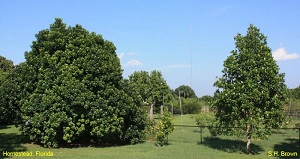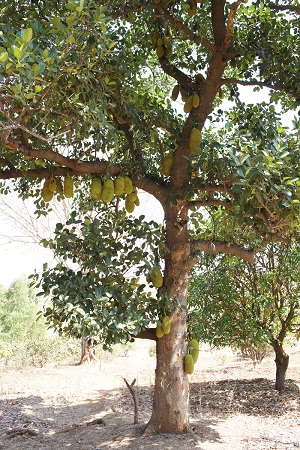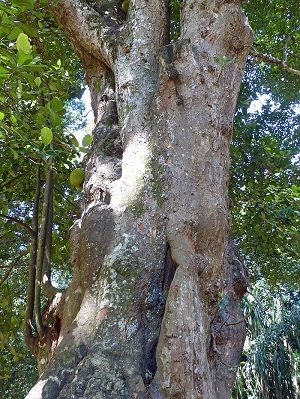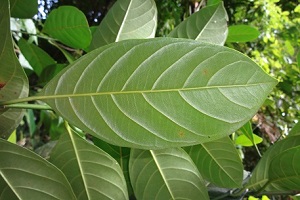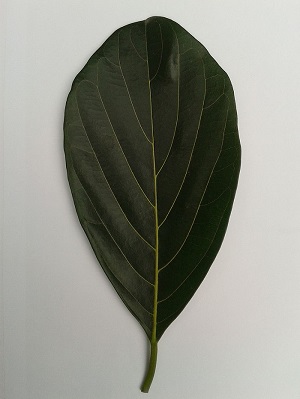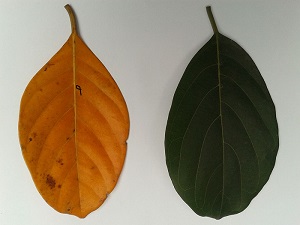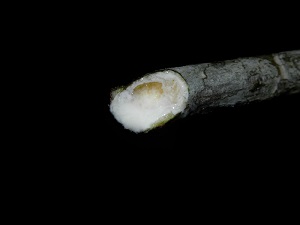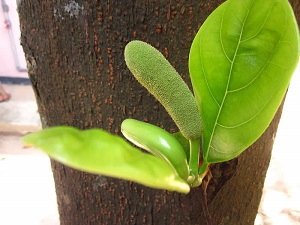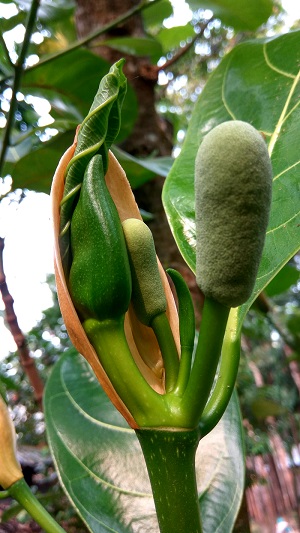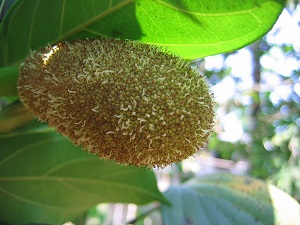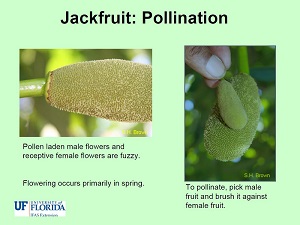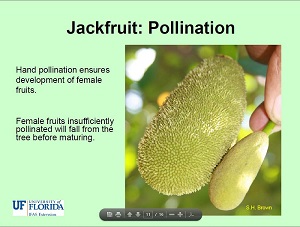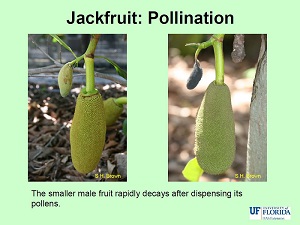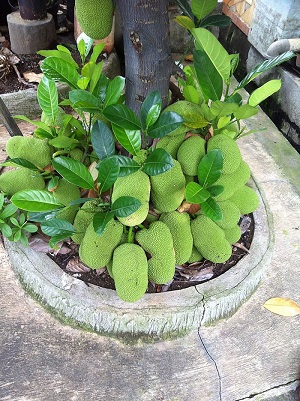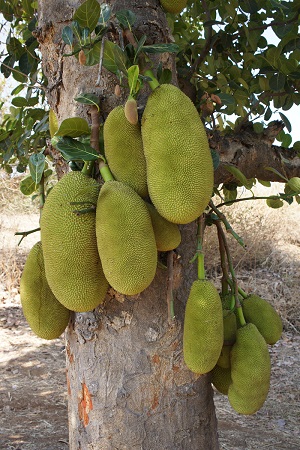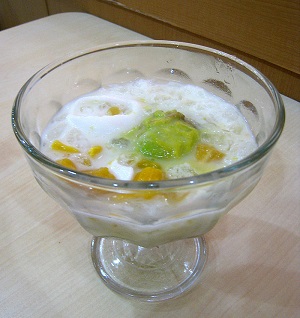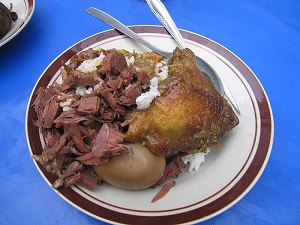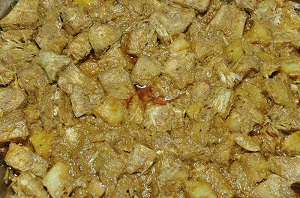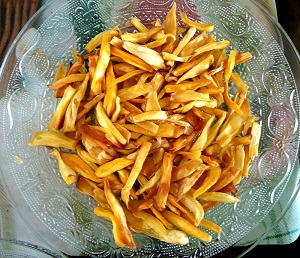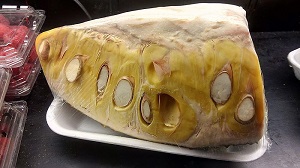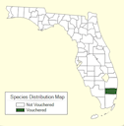| Jackfruit - Artocarpus heterophyllus | |||||||||||||||||||||||||||||||||||||||||||||||||||||||||||||||
|---|---|---|---|---|---|---|---|---|---|---|---|---|---|---|---|---|---|---|---|---|---|---|---|---|---|---|---|---|---|---|---|---|---|---|---|---|---|---|---|---|---|---|---|---|---|---|---|---|---|---|---|---|---|---|---|---|---|---|---|---|---|---|---|
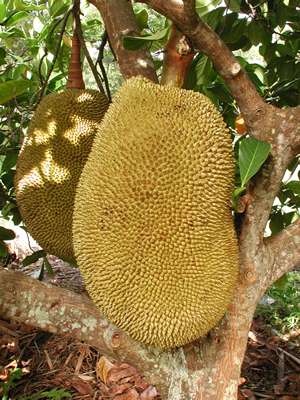 Fig. 1 Artocarpus heterophyllus Jackfruit 'Black Gold' 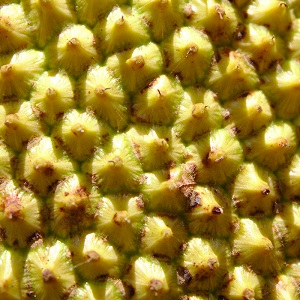 Fig. 2  A close-up view of the surface of a ripening jackfruit, showing individual fruitlets. Trissur, Kerala state, India. 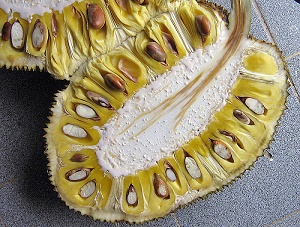 Fig. 3   Fig. 4  Sticky white latex impedes separating the edible part of the fruit and can be removed from the handler's hands using cooking oil 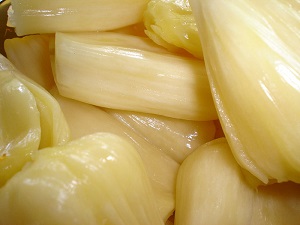 Fig. 5  Jaca dura (Fruto) 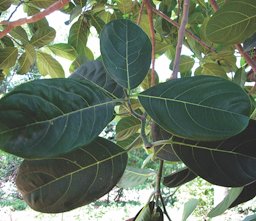 Fig. 9  A. heterophyllus leaf habit 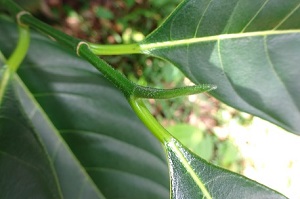 Fig. 10  New leaf growth 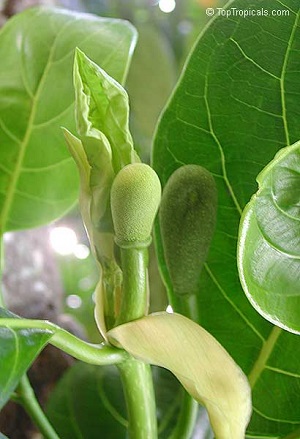 Fig. 16  Female (on the left) and male (on the right) 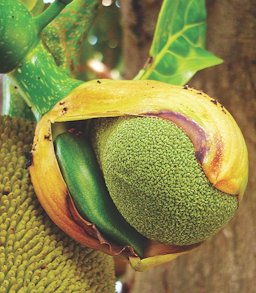 Fig. 24  A. heterophyllus fruit bud  Fig. 30  Nice jackfruits found at the Japanese Cemetery Park (Chuan Hoe Avenue, Singapore)  Fig. 31  Jackfruit, the national fruit of Bangladesh 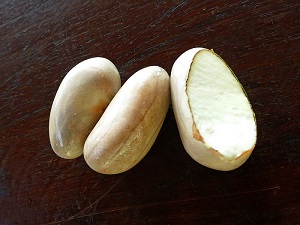 Fig. 32  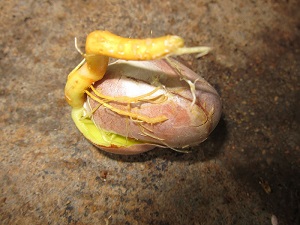 Fig. 33  Seed sprouting 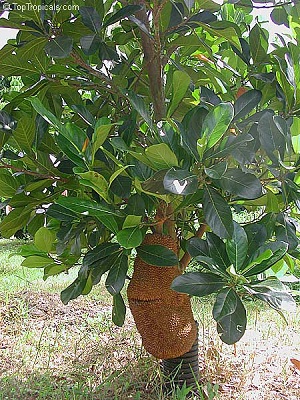 Fig. 34  This mature tree is kept 8 ft tall by cutting the top off (fruit form at the base of a trunk) 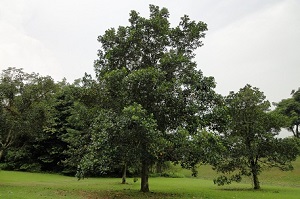 Fig. 35  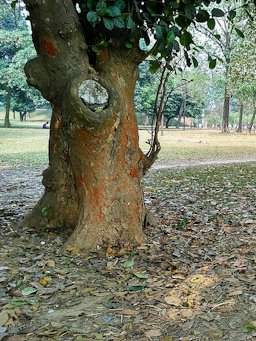 Fig. 36  Jackfruit tree trunk showing texture and coloration. Suhrawardi Uddan, Dhaka, Bangladesh. 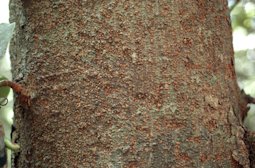 Fig. 37  A. heterophyllus, lenticels 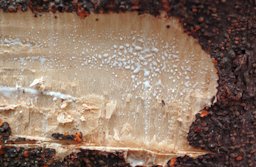 Fig. 38  A. heterophyllus, white sap under the bark 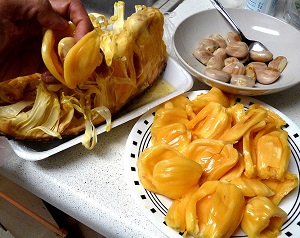 Fig. 39  Extracting the jackfruit arils and separating the seeds from the sweet flesh  Fig. 46  A. heterophyllus tree, Thailand 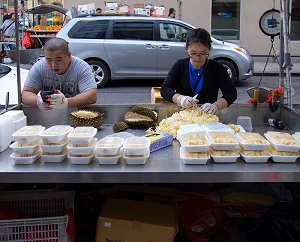 Fig. 47  Durian and jackfruit vendor in Manhattan's Chinatown. Plastic containers with durian and jackfruit on the table (and a pile of jackfruit rags). 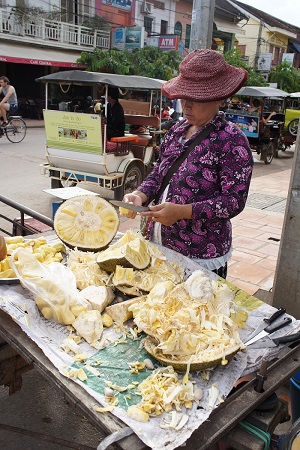 Fig. 48  Lady selling jackfruit (A. heterophyllus) at Siem Reap, Cambodia  Fig. 49  Selling jackfruit in Bangkok 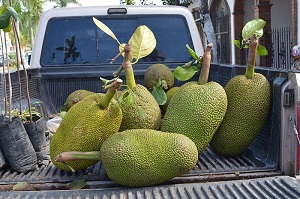 Fig. 50  Jackfruit for sale in Guayabitos, Nayarit, Mexico Note: part of the stem is left to stop the latex from bleeding 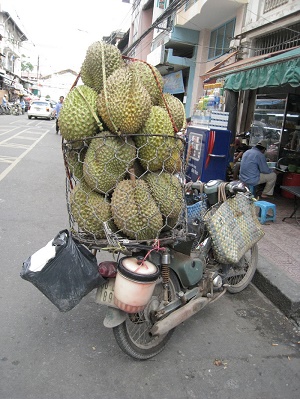 Fig. 51  Jackfruit, Saigon, Vietnam 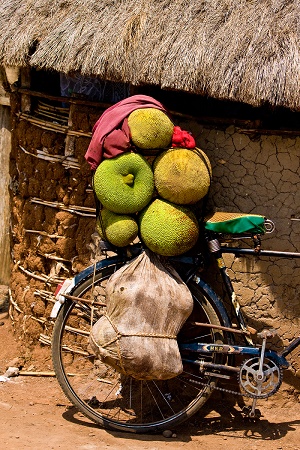 Fig. 52  Though native to South Asia, the jackfruit is quite popular in central Africa, Bigodi, Uganda |
Scientific
name Artocarpus heterophyllus Lam. Common names English: jackfruit, jack, jakfruit, jak; Spanish: arbol del pan, jaquiero, jaca; Portuguese: jaca, jaqueira; Swedish: jackfrukt; German: Nangka, Jacfruchtbaum; French: jacquier; India: kathal 5 Synonyms A. integer auct., A. integrifolius auct. 5 Relatives Breadfruit (A. altilis), fig (Ficus sp.), mulberry (Morus sp.), champedak (A. integer), kwai muk (A. lingnanensis), Ficus benjamina 1 Family Moraceae (mulberry family) Origin India, Malaysia 4 USDA hardiness zones 10-12 Uses Fresh, dried, or preserved in syrup; salads; seeds can be boiled/roasted; immature fruit used as vegetable in soups; baked/fried dishes 1 Height 30-40 ft (9–12 m) 1 Spread 11-12 ft (3.5-6.7 m) 1 Crown Canopy dense; dome shaped or rarely pyramidal 4 Plant habit Erect, evergreen, fairly large tree Growth rate Moderately rapidly Trunk/bark/branches Straight stemmed; branching near base; bark greyish-brown, rough, uneven, somewhat scaly; lenticels (Fig. 37) 4 Pruning requirement Will become very large if not pruned to contain their size; height may be maintained at 8-14 ft (2.4-4.3 m) by periodic selective pruning 1 Leaves Dark green; glossy; somewhat leathery; fairly large; oval shaped on mature wood and deeply lobed on young shoots 1 Flowers Short, stout flowering twigs emerge from the trunk and large branches; monoecious 1 Fruit Multiple fruit; large to very large; rough/thick skin; sweet, aromatic, crispy pulp 1 Yield Typically weigh 10-40 lb (4.5-18.1 kg) 1 Season May to Nov. depending on cultivar USDA Nutrient Content: Canned, Raw pdf Light requirement Full sun to partial shade Soil tolerances Tolerate sand, sandy loams, rocky, well-drained; high pH, calcareous soils of southern Florida 1 pH preference 5.0-7.5 Drought tolerance Moderately drought tolerant Flood tolerance Not tolerant of continuously wet and/or flooded soil conditions 1 Wind tolerance Tolerant of mild to moderately windy conditions; may survive and recover from hurricane force winds with some limb damage 1 Soil/water salt tolerance Limited information of jackfruit tree tolerance to saline soil and/or water; probably not tolerant of saline conditions 1 Cold tolerance Leaves may be damaged at 32 °F (0 °C), branches at 30 °F (-1 °C); trees may be killed at 28 °F (-2 °C) 1 Plant spacing If planning to prune the trees annually, 20-25 ft (6.1–7.6 m) 1 Roots Tap root Invasive potential * Not a problem species (un-documented) Pest resistance Some problems with boring insects and scales Known hazard All parts of the leaf contain a sticky white latex (Fig. 15) 1 Raw seeds are indigestible and contain a trypsin inhibitor, which is dispelled through cooking 8 Reading Material Jackfruit Growing in the Florida Home Landscape, University of Florida pdf Jackfruit, California Rare Fruit Growers Jackfruit, Fruits of Warm Climates Joy of Jackfruit, Edible South Florida Jackfruit, University of Hawai'i at Mānoa pdf Artocarpus heterophyllus Lam., Species Profiles for Pacific Island Agroforestry pdf Origin No one really knows the Jackfruit's place of origin but it is believed to be indigenous to the rain forests of the Western Ghats, India. 2 A Guide to Artocarpus Fruits, Archives of the Rare Fruit Council of Australia Description The jackfruit is the world's largest tree-borne fruit. The fruit can take on the proportions of a large watermelon and can weigh more than 80 pounds. Oblong, spiky, oddly reticulated, the fruit dangle from the trunk and major branches on stout cords. A fruiting tree presents a sensational visual impact. The fruit possesses a fine tropical flavor. The tree is stately and handsome and serves as a beautiful shade tree when it reaches maturity. It deserves to be planted on a broad scale and its popularity as a dooryard tree in Florida is soaring. 8 Images of the Tree and Fruit
Fig. 6. Handsome and stately, two trees with dissimilar appearances Fig. 7. Jackfruit tree in Gujarat, India Fig. 8. Jak (A. heterophyllus) au Jardin botanique de Kandy (Sri Lanka) Leaves The jackfruit leaves are evergreen, alternate, glossy, somewhat leathery to 9 in (22.5 cm) long, oval on mature wood, sometimes oblong or deeply lobed on young shoots. All parts contain a sticky, white latex. 1
Fig. 14. Jackfruit leaves, naturally fallen dead leaf and freshly plucked green leaf Fig. 15. Latex dripping from a cut stem Flowers Male and female flowers are borne in separate flower-heads. Male flower-heads are on new wood among the leaves or above the female. They are swollen, oblong, from an inch to four inches long and up to an inch wide at the widest part. They are pale green at first, then darken. When mature the head is covered with yellow pollen that falls rapidly after flowering. The female heads appear on short, stout twigs that emerge from the trunk and large branches, or even from the soil-covered base of very old trees. They look like the male heads but without pollen, and soon begins to swell. 11 Flowers are attached externally to the male and the female fruit.
Pollination Jackfruit are wind and insect pollinated, and generally fruit set and fruit quality is enhanced by cross pollination among different cultivars (or seedlings). 1
Fig. 20. Male fruits emerge first and the female fruits are pollinated after emergence. Fig. 21. Pollen laden male flowers and receptive female flowers are fuzzy. To pollinate, pick male fruit and brush it against female fruit. Fig. 22. Hand pollination ensures development of female fruits. Female fruits insufficiently pollinated will fall from the tree before maturing. Fig. 23. The smaller male fruit rapidly decays after dispensing its pollens.
Craig, in the above video, mentions that contrary to other fruit trees propagated from seed, taking 7-10 years to bear any fruit, jackfruit will produce fruit in three years. Fruit The jackfruit is a multiple fruit i.e., composed of the coherence of multiple flowers (Fig. 15,16). Fruit is moderately large to very large, weighing from 10 to 60 pounds (4.5–27.3 kg). A few cultivars are small fruited, weighing 3 to 10 pounds (1.4–4.5 kg) each. The skin is extremely rough and thick. Fruit skin color is green when immature and green, greenish-yellow to brownish-yellow when ripe. The inside of the fruit contains the edible, sweet, aromatic, crispy, soft, or melting pulp that surrounds each seed. Between the seeds and edible pulp is the inedible “rag". Pulp color varies from amber to yellow, dark yellow, or orange. Seeds are 3/4 to 1 1/4 inches (2 to 3 cm) long, oval; the number per fruit varies from 30 to 500. The time from flowering to fruit maturity ranges from 150 to 180 days. 1 Jackfruit What to Look For, Archives of the Rare Fruit Council of Australia Jackfruit Tips, Pacific Island Agroforestry
Fig. 25. Fruit habit Fig. 26. Different stages of growth Fig. 27. Fruit habit, grows on trunk and branches Fig. 28. Jackfruit growing on a tree in Can Tho, Vietnam Fig. 29. Jackfruit in Gujarat, India Varieties Page Cultivar Descriptions, Fairchild Tropical Botanic Garden Virtual Herbarium Curator's Choice Jackfruit, Fairchild Tropical Botanic Garden A new generation of jackfruit includes smaller varieties, Fairchild Tropical Botanic Garden Harvesting The main fruiting season is in summer and fall. Some fruit may ripen at other times, but usually not in winter and early spring. 1 Mature jackfruit trees may produce from 40 to over 250 pounds (18–114 kg) per tree, depending on the cultivar, weather, and cultural practices. Trees that average 150 pounds (68 kg) per tree or more are considered good producers. 1 Harvest fruit with clippers or loppers. The cut stem will immediately exude white, sticky latex; this latex will permanently stain clothing. Place fruit in the shade until the latex stops exuding from the cut stem. 1 How to tell when it is ripe, Sub-Tropical Fruit Club of Qld Jackfruit Propagation Breeding and Selection of Jackfruit for south Florida, Florida State Horticultural Society pdf Culture The jackfruit is well adapted to the hot humid tropics. Jackfruit grows well in the humid subtropical climate of south Florida along the coastal areas where there are only occasional freezes. Optimum growth and production occurs in continuously warm areas. 1 Cultural Calendar, University of Florida A Guide to Jackfruit Cultivation, Archives of the Rare Fruit Council of Australia Pruning Young jackfruit trees do not need pruning during their first year. Shoot tip pruning once or twice during spring and summer will force lateral bud break and make the tree more compact. Non-pruned trees usually develop a strong central leader. During the second season, trees should be pruned to the first lateral branch, which will slow upward growth and enhance spreading of the canopy. As trees mature, upright vigorous shoots should be removed and the inner canopy thinned out at the end of the harvest season. 1 Dr. Campbell recommends to prune during the warm and humid season, i.e. Aug., Sept. and Oct., as pruning in the cold dry months will result in die-back and dead wood. The best place for the fruit to grow is on the lower trunk. It will fruit anywhere on the tree trunk but will be difficult to harvest higher up. Remove the lower limbs to expose the trunk, you will soon see new fruiting shoots around these cuts. Last summer fruiting spurs as well as the thin, wispy spurs that have not fruited should be also be removed, they will not fruit again.
Fruit thinning The number of fruit per tree or major limb should be limited to 1 on young trees, as heavy fruit loads have been observed to result in limb decline or death and tree stunting. On mature trees, limiting the number of fruit per major limb may enhance the quality and size of remaining fruit. 1 Fertilizing For mature trees, fertilizer should be applied 2 to 3 times from bloom to right after harvesting and pruning. Iron applications are most effective from May to September, and foliar sprays from April to September. 1 Irrigation A means of watering young trees should be available for newly planted and young trees. For mature trees watering is recommended during dry periods and is critical from bloom through fruit development. 1 Pest/Disease Page Food Uses Jackfruit may be eaten as a vegetable when picked at an immature stage or eaten fresh when picked at a mature stage and allowed to ripen. Immature fruit are usually 1 to 3 months old, are green and may be harvested for cooking. 1 Green, immature fruit may be used as a vegetable in cooking including soups, baked dishes, and fried. The pulp of ripe fruit may be eaten fresh, dried, or preserved in syrup or used for salads. The seeds can be boiled and roasted (eaten as a nut) and have a chestnut flavor. 1 Because unripe jackfruit has a meat-like taste, it is used in curry dishes with spices in Bihar, Jharkhand, Sri Lankan, Andhran, eastern Indian Bengali, Odisha and Keralan cuisines. The skin of unripe jackfruit must be peeled first; then the remaining whole jackfruit can be chopped into edible portions and cooked before serving. Young jackfruit has a mild flavor and distinctive meat-like texture and is compared to poultry. Meatless sandwiches have been suggested and are popular with both vegetarian and non vegetarian populations. 7 Arils can be fermented and distilled to produce an alcoholic beverage. 4
Fig. 40. Es teler, an Indonesian dessert made from shaved ice, condensed milk, coconut, avocado, and jackfruit. Fig. 41. Gudeg, (left), the unripe jackfruit curry in a reddish color acquired from the teak leaf, a specialty of Yogyakarta in Java. Fig. 42. Green jackfruit and potato curry, Kolkata. Popular West Bengal dishes. Fig. 43. Chakka-chips, jackfruit fried. Fig. 44. Packed jackfruit (A. heterophyllus) sold in a market. Fig. 45. Polythene packed cut Jack fruit in a grocery store in Canada for sale.
Jackfruit Preparation, Farm science Centre of ICAR, University of Florida Jackfruit Recipes, Fairchild Tropical Botanic Garden Virtual Herbarium How to Use Jackfruit, Fairchild Tropical Botanic Garden Virtual Herbarium Jackfruit, Taste Florida's Tropics Cookbook A Guide to Jack Fruit Eating Qualities, Archives of the Rare Fruit Council of Australia Medicinal Properties ** All parts of the plant have medicinal properties. The root is a remedy for skin diseases and asthma and the extract is taken in cases of fever and diarrhea. The ashes of the leaves, burned together with corn and coconut shells are used alone or mixed with coconut oil to heal ulcers. Mixed with vinegar, the latex promotes healing of abscesses, snakebite and glandular swellings. Heated leaves alone are placed on wounds and the bark is made into poultices. The seed starch is given to relieve biliousness and the roasted seeds are regarded as aphrodisiac. In Chinese medicine the pulp and seeds are considered tonic and nutritious. 2 Other Uses • The wood contains the yellow colorant, morin and the colorless cyanomaclurin. In 1955, workers in Bombay reported and a new yellow colorant called artocarpin. And the National Chemical Laboratory in Poona has isolated other six flavonoids. • The bark is occasionally made into cordage or cloth. • The 'rags' are very rich in pectin and are ideal material for jelly-making. • The wood is beautiful, resembling mahogany and changing with age from orange or yellow to brown or dark-red. It is resistant to termite attack and fungal and bacterial decay and is easy to season. It takes polish beautifully. Though not as strong as teak, A. heterophyllus wood is considered superior to teak (Teclona grandis) for furniture, construction, turnery and inlay work, masts, oars, implements and musical instruments. The wood is widely used in India and Sri Lanka and is even exported to Europe. • The latex yields 71.8% resin, consisting of 63.3% fluavilles (yellow) and 8.5% albanes (white). These resins may be valuable in varnishes. • Roots are highly prized for carvings and picture framing. 2,4,9 Other Edibles in the Artocarpus genus: Breadfruit, A. altilis Chempedak, A. integer Kwai Muk, A. hypargyraeus Lakoocha, A. lacucha Marang, A. odoratissimus General The generic name comes from the Greek words ‘artos’ (bread) and ‘karpos’ (fruit); the fruits are eaten and are commonly called breadfruit. The specific name, ‘heterophyllus’, is Latin for various leaves, or with leaves of different sizes and shapes; it is from the Greek word ‘heteros’ (different). 4 Never leave a decomposing jakfruit under the tree - nearly every seed will germinate, and having a tap root, are hard to pull up. So compost the fruit and seeds. There are other fruits that germinate under the tree if not picked up - yellow mangosteen and white sapote (Casimiroa edulis) are difficult to pull up when only a few inches tall. For hygiene, fallen fruit should always be gathered daily - eaten if O.K. and composted if not. 10
Fig. 53. Jackfruit distribution map, wild populations Further Reading Jaca, jackfruit, Common Trees of Puerto Rico and the Virgin Islands Jakfruit in the Philippines, Archives of the Rare Fruit Council of Australia Jack Fruit The Wonder Fruit, Farm science Centre of ICAR, Gov. of India Artocarpus heterophyllus, Lam., Agroforestree Database The Jackfruit, Manual Of Tropical And Subtropical Fruits Jackfruit, Artocarpus heterophyllus, Sub-Tropical Fruit Club of Qld The Promise of Jakfruit, Tropical Fruit News, RFCI Jackfruit Hints, Archives of the Rare Fruit Council of Australia Jackfruit, Manatee County Master Gardener Newsletter Jackfruit Botanical Art List of Growers and Vendors |
||||||||||||||||||||||||||||||||||||||||||||||||||||||||||||||
| Bibliography 1 Crane, Jonathan H., et al. "Jackfruit Growing in the Florida Home Landscape." Horticultural Sciences Dept., UF/IFAS Extension, HS-882, Pub. date May 2002, Revised Oct. 2005 and Nov. 2016, Reviewed Dec. 2019, AskIFAS, edis.ifas.ufl.edu/mg170. Accessed 17 Jan. 2017, 6 July 2020. 2 Fruits of Warm Climates. Julia F. Morton, Miami, 1987. 3 "Jackfruit." Wikipedia, www.wikipedia.org. Accessed 22 Dec. 2014. 4 Orwa, C., et al. "Artocarpus heterophyllus, Lam." Agroforestree Database: a tree reference and selection guide, version 4.0. 2009, worldagroforestry.org. Accessed 17 Jan. 2017. 5 "Taxon: Artocarpus heterophyllus Lam." USDA, Agricultural Research Service, National Plant Germplasm System, Germplasm Resources Information Network (GRIN-Taxonomy), National Germplasm Resources Laboratory, Beltsville, Maryland, 2020, U.S. National Plant Germplasm System, www.ars-grin.gov. Accessed 18 Jan. 2017. 6 "Artocarpus heterophyllus Lam." The Plant List (2010), Version 1, www.theplantlist.org. Accessed 18 Jan. 2017. 7 "Jackfruit." Wikipedia, www.wikipedia.org. Accessed 18 Jan. 2017. 8 Boning, Charles R. Florida's Best Fruiting Plants- Native and Exotic Trees, Shrubs, and Vines. Sarasota, Pineapple Press, 2006. 9 "Jakfruit in the Philippines, Part III." Archives of the Rare Fruit Council of Australia, May 1988, rfcarchives.org.au/Next/Fruits/Jakfruit/JakCultureIII7-85.htm. Accessed 25 Feb. 2019. 10 Spear, Marjorie. "Jackfruit Hints." Archives of the Rare Fruit Council of Australia, Jan. 1991, rfcarchives.org.au. Accessed 20 Dec. 2014. 11 "Jackfruit." California Rare Fruit Growers, crfg.org/wiki/fruit/jackfruit/. Accessed 18 Dec. 2014. Videos v3 "Jackfruit Flowers - How to Tell the Difference Between Male and Female Flowers/How to Pollination." Sultata Grove, 17 Apr. 2017, (CC0), www.youtube.com/watch?v=NiQol7D7IT4. Accessed 15 Jan. 2022. v2 Cambell, Richard J. "Jackfruit Pruning Concepts." Fairchild Tropical Botanic Garden, 14 Jan. 2011, (CC0), www.youtube.com/watch?v=e98_ri404v8. Accessed 15 Jan. 2022. v3 Cambell, Richard J. "Pruning Jackfruit." Fairchild Tropical Botanic Garden, 14 Jan. 2011, (CC0), www.youtube.com/watch?v=86tG82uxDXc. Accessed 15 Jan. 2022. v4 "How to Cut Open, Clean, and Eat a Jackfruit - Butter Crunch Jackfruit Tasting." Sultata Grove, 21 Nov. 2018, (CC0), www.youtube.com/watch?v=6SnGjlkoKQ8. Accessed 15 Jan. 2022. Photographs Fig. 1 Maguire, Ian. "Jackfruit." UF/TREC, trec.ifas.ufl.edu. Accessed 20 Dec. 2014. Fig. 2 Slashme. "A close-up view of the surface of a ripening jackfruit, showing individual fruitlets. Photographed in Trissur, Kerala state, India." Wikimedia Commons, 2016, (CC BY-SA 4.0), commons.wikimedia.org. Accessed 19 Jan. 2017. Fig. 3,4 Popovkin, Alex. "Artocarpus heterophyllus." Flickr, 2007, (CC BY 2.0), www.flickr.com. Accessed 20 Dec. 2014. Fig. 5 Clara. "Jaca dura (Fruto)." Wikimedia Commons, 2007, (CC BY-SA 3.0), commons.wikimedia.org. Accessed 19 Jan. 2017. Fig. 6 Brown, S. H. "Handsome and stately, two trees with dissimilar appearances." UF/IFAS Extension, PPP, Jackfruit, Artocarpus heterophyllus, Appearance and Pollination, AskIFAS, edis.ifas.ufl.edu. Accessed 18 Dec. 2014. Fig. 7 Crops for the Future. "Jackfruit in Gujarat, India." Wikimedia Commons, 2011, (CC BY-SA 3.0), commons.wikimedia.org. Accessed 19 Jan. 2017. Fig. 8 Ji-Elle. "Jak (Artocarpus heterophyllus) au Jardin botanique de Kandy (Sri Lanka)." Wikimedia Commons, 2013, (CC BY-SA 3.0), commons.wikimedia.org. Accessed 19 Jan. 2017. Fig. 9 Kavitha, A., et al. "Artocarpus heterophyllus, leaf twig." India Biodiversity Portal, (CC BY-SA 4.0), Biodiversity India, indiabiodiversity.org/species/show/8042. Accessed 10 July 2020. Fig. 10,11,13,35 Kwan. "Artocarpus heterophyllus." Plant Observatory, 2010, natureloveyou.sg. Accessed 21 Dec. 2014. Fig. 12,14 Vanischenu. "Jackfruit leaves,freshly plucked green leaf and a naturally fallen dead leaf." Wikimedia Commons, 2013, (CC BY-SA 3.0), commons.wikimedia.org. Accessed 19 Jan. 2017. Fig. 15 Aguilar, Reinaldo. "Latex dripping from a cut stem. Artocarpus heterophyllus Lam." Vascular Plants of the Osa Peninsula, Costa Rica, 2012, (CC BY-NC-SA 2.0), Flickr, www.flickr.com. Accessed 21 Jan. 2017. Fig. 16,26 "Artocarpus heterophyllus." Top Tropicals, toptropicals.com. Accessed 21 Dec. 2014. Fig. 17 Chandana 12. "Developping Jackfruit." Wikipedia, 2012,(CC BY 3.0), www.wikipedia.org. Accessed 18 Jan. 2017. Fig. 18 কামরুল ইসলাম শাহীন . "Jackfruit bud of Bangladesh বাংলা: কচি কাঁঠাল. Wikimedia Commons, 2016, (CC BY-SA 4.0), commons.wikimedia.org. Accessed 19 Jan. 2017. Fig. 19 Vinayaraj. "Artocarpus heterophyllus." Wikimedia Commons, 2005, (CC BY-SA 3.0), commons.wikimedia.org. Accessed 19 Jan. 2017. Fig. 20,21,22,23 Brown, S. H., and Jonathan Crane. "Jackfruit: Pollination." PPP Jackfruit, Artocarpus heterophyllus, Appearance and Pollination, AskIFAS, edis.ifas.ufl.edu. Accessed 18 Dec. 2014. Fig. 24 Kavitha, A., et al. "Artocarpus heterophyllus, fruit bud." India Biodiversity Portal, Biodiversity India, (CC BY-SA 4.0), indiabiodiversity.org/species/show/8042. Accessed 10 July 2020. Fig. 25 Binu, Augustus. "Jackfruit hanging." Wikimedia Commons, 2015, (CC BY-SA 4.0), commons.wikimedia.org. Accessed 19 Jan. 2017. Fig. 27 Dinototosugiarto. "Nangka Ngora." Wikimedia Commons, 2015, (CC BY-SA 4.0), commons.wikimedia.org. Accessed 19 Jan. 2017. Fig. 28 Dragfyre. "Jackfruit growing on a tree in Can Tho, Vietnam." Wikimedia Commons, 2011, (CC BY-SA 3.0), commons.wikimedia.org. Accessed 19 Jan. 2017. Fig. 29 Crops for the Future. "Jackfruit tree in Gujarat, India." Wikipedia, 2011, (CC BY-SA 4.0), www.wikipedia.org. Accessed 18 Jan. 2017. Fig. 30 ProjectManhattan. "Nice jackfruits found at the Japanese Cemetery Park (Chuan Hoe Avenue, Singapore)." Wikipedia, 2013, (CC BY 3.0), www.wikipedia.org. Accessed 18 Jan. 2017. Fig. 31 Balaram Mahalder. "Jackfruit, the national fruit of Bangladesh." Wikimedia Commons, 2011, commons.wikimedia.org. Accessed 19 Dec. 2014. Fig. 34 "This mature tree is kept 8ft tall by cutting the top off (fruit form at the base of a trunk)." Top Tropicals, toptropicals.com. Accessed 18 Jan. 2017. Fig. 36 Salim_Khandoker. "Jackfruit tree trunk showing texture and coloration. Suhrawardi Uddan. Dhaka." Wikimedia Commons, 10 Feb. 2018, (CC BY-SA 3.0), commons.wikimedia.org/wiki/File:Stem_of_jackfruits_tree.jpg Fig. 37 Ayyappan, N. "Artocarpus heterophyllus, lenticels." The Biotic Team, French Institute of Pandicherry, India Biodiversity Portal, (CC BY 4.0), Biodiversity India, indiabiodiversity.org/species/show/8042. Accessed 10 July 2020. Fig. 38 Ayyappan, N. "Artocarpus heterophyllus, white sap." The Biotic Team, French Institute of Pandicherry, India Biodiversity Portal, (CC BY 4.0), Biodiversity India, indiabiodiversity.org/species/show/8042. Accessed 10 July 2020. Fig. 39 Aznaturalist. "Extracting the jackfruit arils and separating the seeds from the sweet flesh." Wikipedia, 2012, www.wikipedia.org. Accessed 19 Dec. 2014. Fig. 40 Kartapranata, Gunawan. "Es teler, an Indonesian dessert made from shaved ice, condensed milk, coconut, avocado, and jackfruit." Wikipedia, 2011, (CC BY-SA 3.0), www.wikipedia.org. Accessed 18 Jan. 2017. Fig. 41 Lanin, Ivan. "Gudeg, (left), the unripe jackfruit curry in a reddish color acquired from the teak leaf, a specialty of Yogyakarta in Java." Wikipedia, 2008, (CC BY-SA 2.0), www.wikipedia.org. Accessed 18 Jan. 2017. Fig. 42 Ganguly, Biswarup. "Green jackfruit and potato curry, Kolkata. Popular West Bengal dishes." Wikipedia, 2011, (CC BY 3.0), www.wikipedia.org. Accessed 18 Jan. 2017. Fig. 43 Ranjithsiji. "Jackfruit roast." Wikimedia Commons, 2013, (CC BY-SA 3.0), GFDL, commons.wikimedia.org. Accessed 19 Jan. 2017. Fig. 44 Slater, Susan. 'Packed jackfruit (Artocarpus heterophyllus) sold in a market." Wikipedia, 2009, (CC BY-SA 4.0), www.wikipedia.org. Accessed 18 Jan. 2017. Fig. 45 Kokkarani. "Polythene packed cut Jack fruit in a grocery store in Canada for sale." Wikipedia, 2016, (CC BY-SA 4.0), www.wikipedia.org. Accessed 18 Jan. 2017. Fig. 46 Weber, Jean. INRA, DIST, Dec. 22, 2017, Flickr, (CC BY 2.0), www.flickr.com/photos/inra_dist/39215137511/in/album-72157689187204422/. Accessed 1 Jan. 2018. Fig. 47 Rhododendrites. "Durian and jackfruit vendor in Manhattan's Chinatown. Plastic containers with durian and jackfruit on the table (and a pile of jackfruit rags)." Wikimedia Commons, 2016, (CC BY-SA 4.0), commons.wikimedia.org. Accessed 19 Jan. 2017. Fig. 48 Hermann, Michael. "Lady selling jackfruit (Artocarpus heterophyllus) at Siem Reap, Cambodia." Wikimedia Commons, 2013, (CC BY-SA 3.0), commons.wikimedia.org. Accessed 19 Jan. 2017. Fig. 49 Xufanc. "Selling jackfruit in Bangkok." Wikipedia, 2012, (CC BY-SA 3.0), www.wikipedia.org. Accessed 19 Dec. 2014. Fig. 50 AlejandroLinaresGarcia. "Jack fruit for sale in Guayabitos, Nayarit, Mexico." Wikimedia Commons, 2013, (CC BY-SA 3.0). commons.wikimedia.org. Accessed 19 Jan. 2017. Fig. 51 saragoldsmith. "Jackfruit, Saigon, Vietnam." Flickr, 2009, (CC BY 2.0), www.flickr.com. Accessed 21 Jan. 2017. Fig. 52 Ziegler, Garrett. "Though native to South Asia, the jackfruit is quite popular in central Africa. Bigodi, Uganda." Flickr, 2009, (CC BY-NC-ND 2.0), www.flickr.com. Accessed 18 Jan. 2017. Fig. 53 Wunderlin, R. P., et al. "Artocarpus heterophyllus." Atlas of Florida Plants, [S. M. Landry and K. N. Campbell (application development), USF Water Institute.] Institute for Systematic Botany, University of South Florida, Tampa, 2020, florida.plantatlas.usf.edu/Plant.aspx?id=4953. Accessed 11 July 2020. * UF/IFAS Assessment of Non-native Plants in Florida's Natural Areas ** Information provided is not intended to be used as a guide for treatment of medical conditions. Published 17 Dec. 2014 LR. Last update 3 Apr. 2022 LR |
|||||||||||||||||||||||||||||||||||||||||||||||||||||||||||||||
